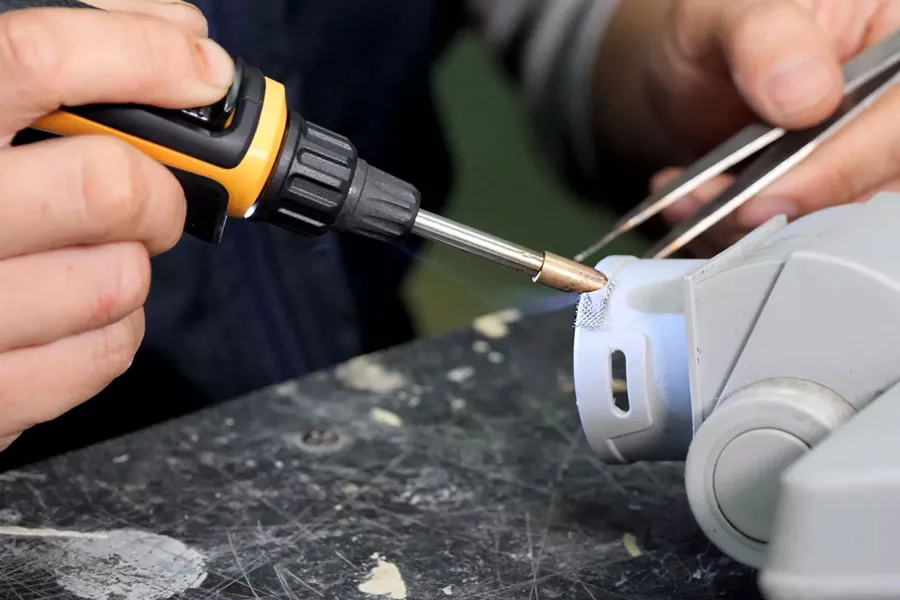Applications of Plastic Welding
Plastic welding is used for a variety of applications, including:
- Automotive Repairs: Cracked plastic bumpers, dashboards, and other vehicle parts.
- Home Repairs: Roofing, flooring, and tarpaulins.
- Industrial Uses: Plastic pipes, tanks, and other infrastructure.
- Everyday Items: Toys, decorations, and household items.
Temperature Control
Accurate temperature control is crucial for successful plastic welding. The Pro Iroda Plastic Welding Iron offers easy, fingertip control, ensuring the melting temperature is efficient for welding yet sensitive enough to prevent overheating. Overheating can weaken the weld, making it less durable.
Hot Staples
For added strength, hot staples can be used in plastic welding. The Iroda Pro Plastic Welding Kit includes a Plastic Welding Tip and a Plastic Stapling Tip, with staples provided in the kit. Hot staples reinforce the weld, providing additional support and durability.
Iroda Plastic Welding Tool Range
Iroda Pro offers a range of industrial cordless gas-powered torches that are fully portable and lightweight. These tools heat up in 20 seconds or less, making them ideal for quick and professional plastic welding jobs on location.

Iroda PRO-25L is a high efficiency multi-function portable soldering iron with a high capacity rechargeable Lithium-Ion-Battery
Steps for Plastic Welding
- Preparation: Clean the surfaces to be welded, removing any contaminants that could affect the weld quality.
- Positioning: Align the parts to be welded accurately.
- Welding: Use the Pro Iroda Plastic Welding Iron to melt the plastic along the joint. Apply consistent pressure to ensure a strong bond.
- Reinforcement: If using hot staples, insert them along the weld for added strength.
- Cooling: Allow the welded area to cool naturally. Do not force-cool, as this can cause stress and weaken the weld.
Advanced Techniques
- Butt Welding: Ideal for joining two pieces edge-to-edge. Ensure both edges are clean and apply even heat until the plastic melts and fuses together.
- Fillet Welding: Used when the plastic pieces are joined at an angle. This technique requires precise control to ensure a smooth, strong weld.
- Spot Welding: Suitable for fixing smaller areas or reinforcing parts of a weld. Apply heat to small spots until the plastic fuses.
- Extrusion Welding: For large-scale repairs, using an extruder to apply molten plastic to the joint, creating a strong, seamless bond.
Tips for Effective Plastic Welding
- Consistent Heat: Maintain a consistent heat level to avoid overheating or underheating the plastic.
- Proper Ventilation: Ensure good ventilation when welding plastics to avoid inhaling any fumes.
- Practice: Like any skill, practice makes perfect. Start with small, simple projects to build your confidence and technique.
Safety Considerations
- Protective Gear: Always wear gloves and safety glasses to protect against burns and splashes.
- Ventilation: Work in a well-ventilated area to avoid inhaling fumes.
- Tool Maintenance: Keep your tools in good working condition to ensure safety and efficiency.
FAQ – Plastic Welding
Conclusion
Plastic welding is a valuable skill that can save time and money by allowing you to repair and join plastic materials effectively. With the right tools and techniques, you can achieve professional results. Explore the range of Iroda Pro plastic welding tools to find the perfect solution for your needs.






